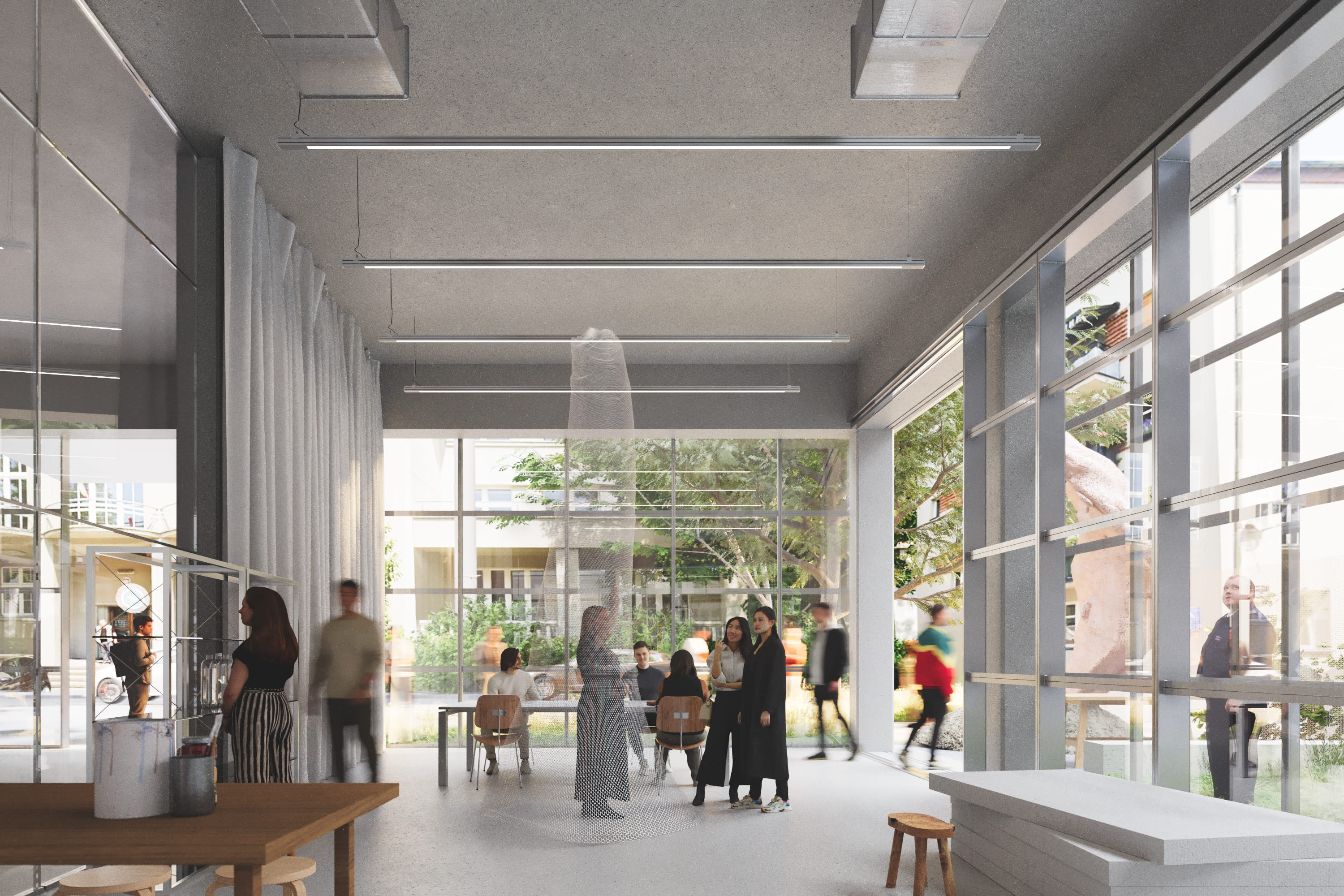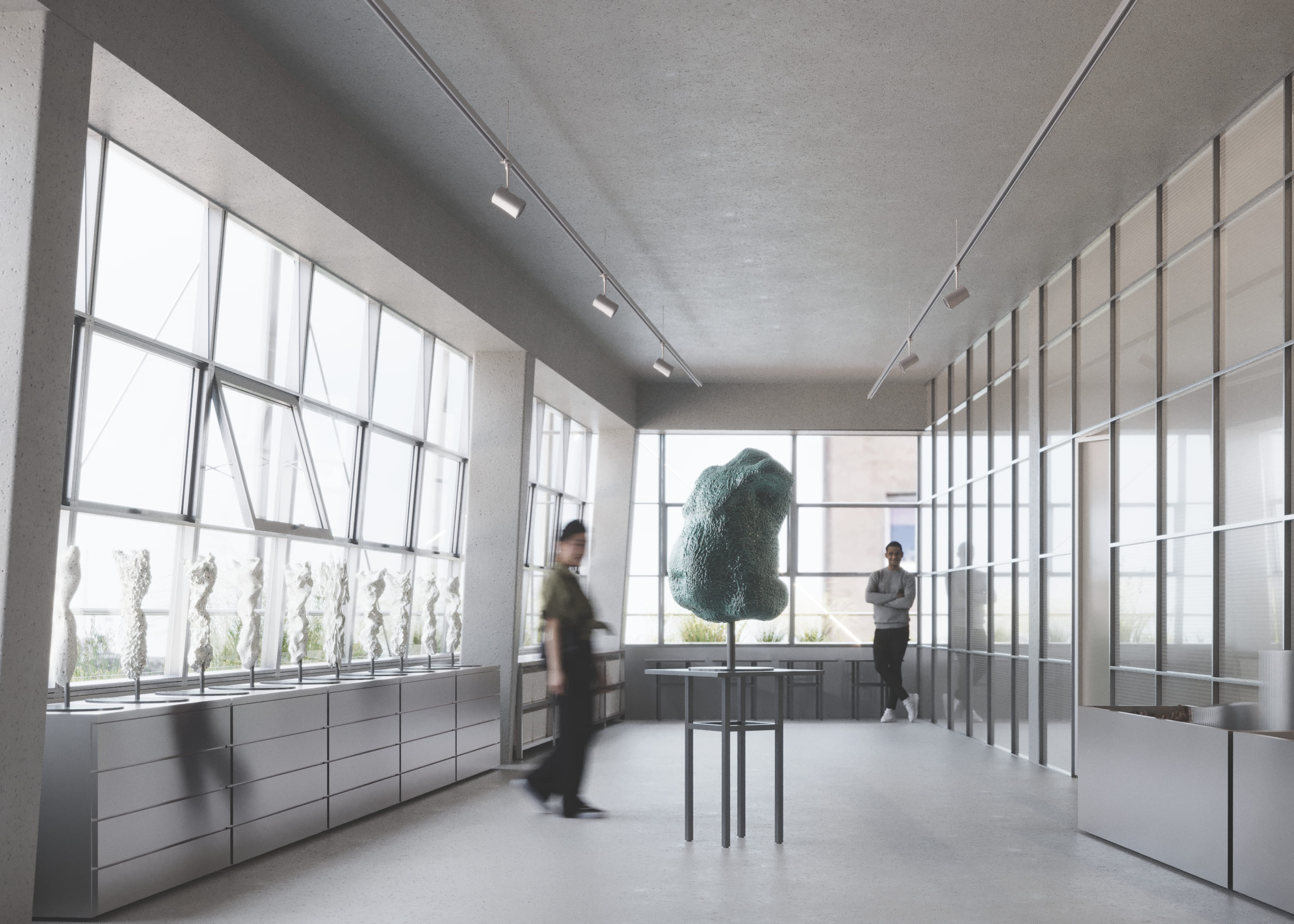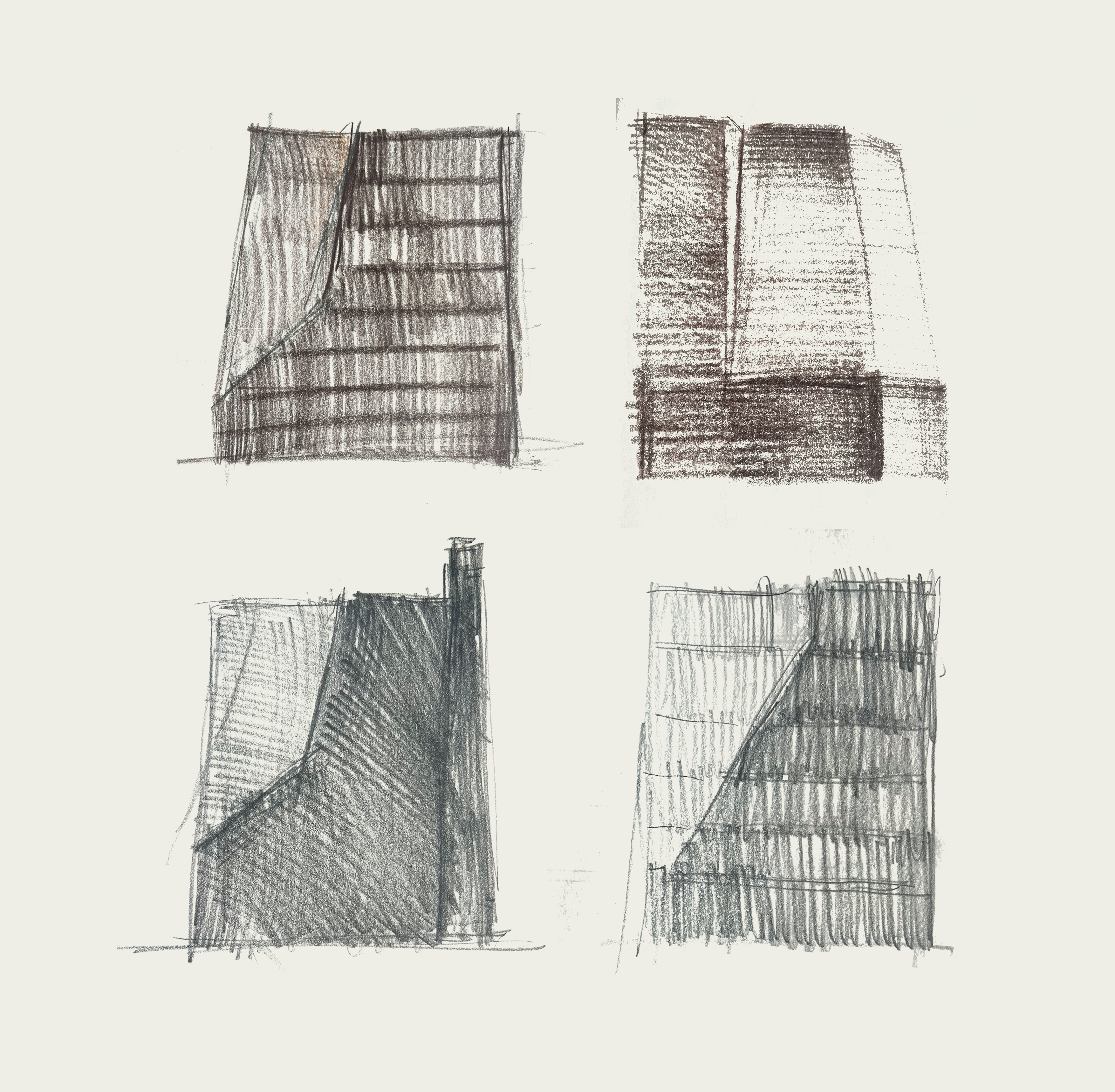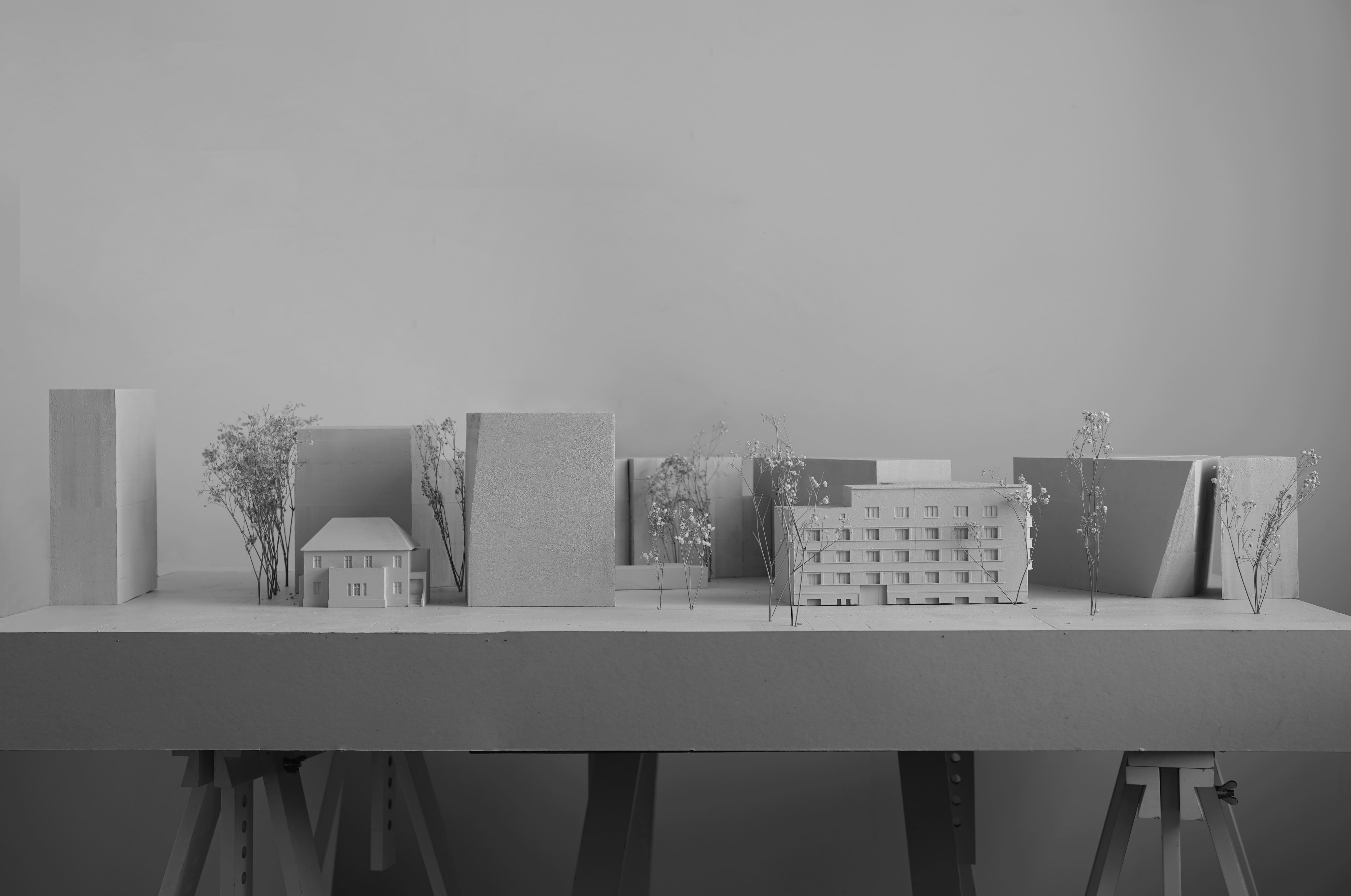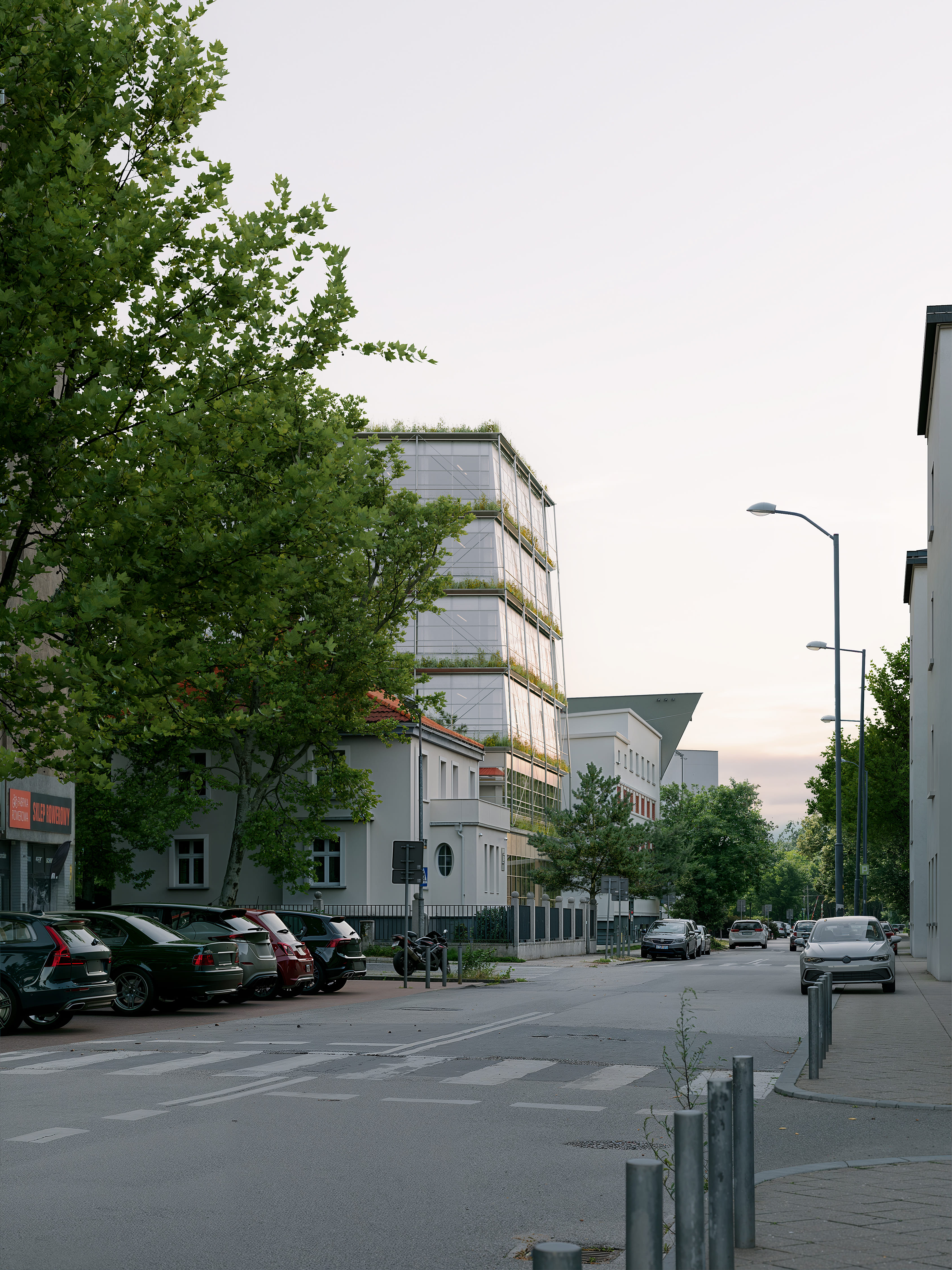
Akademia Sztuk Pięknych w Katowicach
Nowy budynek Akademii to opowieść o przemianie – głębokiej, wielowymiarowej i symbolicznej.
Projekt stanowi próbę przekształcenia dziedzictwa regionu – zarówno materialnego jak i niematerialnego – w nową jakość architektoniczną, wpisaną w ducha miejsca, ale otwartą na przyszłość. Jest świadomym przekształceniem dziedzictwa eksploatacji w architekturę symbiozy.
Forma budynku nawiązuje do industrialnego pejzażu regionu – jego charakterystycznych geometrii i struktur. Jednak ich pierwotny sens zostaje odwrócony: to już nie przestrzeń wykorzystywania zasobów naturalnych, lecz przestrzeń refleksji, tworzenia i regeneracji. Akademia staje się narzędziem zmiany – fizycznym i symbolicznym nośnikiem nowego podejścia do środowiska naturalnego.
Nowa infrastruktura nie eksploatuje, lecz wspiera – zarówno środowisko, jak i społeczność. Akademia staje się miejscem odkrywania i wytwarzania – wiedzy, technologii, materiałów, które prowadzą do zrównoważonej przyszłości. Jest to przestrzeń eksperymentu i edukacji, ale też symboliczny znacznik przemiany – od eksploatacji zasobów ku odpowiedzialnemu ich wykorzystaniu.
Techniczny charakter nie oznacza dystansu wobec przyrody – wręcz przeciwnie. Forma, materiały i sposób funkcjonowania Akademii mają na celu pogłębienie symbiozy z otoczeniem. Budynek funkcjonuje w rytmie przyrody: magazynuje wodę, wykorzystuje energię słoneczną, oddycha i reaguje na zmienne warunki. Zielone dachy, bioklimatyczne rozwiązania i elastyczne układy przestrzenne wpisują się w ideę regeneracyjnego projektowania. To nie tylko obiekt niskoemisyjny – to struktura ucząca, jak żyć w zgodzie z krajobrazem i jego rytmami.
Akademia to przestrzeń transformacji – nie tylko dziedzictwa architektonicznego, ale także społecznej świadomości. Dawne symbole wydobycia stają się nośnikami nowych wartości: regeneracji, edukacji i współistnienia z naturą. Akademia nie tylko uczy, jak działać odpowiedzialnie – sama staje się manifestem tej postawy. Przemiana nie jest tu metaforą – jest realną zmianą funkcji, znaczeń i wartości.
Typ:
edukacja
Funkcja:
użyteczność publiczna
Inwestor:
Akademia Sztuk Pięknych w Katowicach
Data:
2025
Lokalizacja:
Katowice
Powierzchnia:
1922
m2
Status:
koncepcja
Nagrody:
Zespół projektowy:
Szczepan Wroński, Małgorzata Bonowicz, Michał Sokołowski, Anna Majewska-Karolak, Dominik Zagajewski, Michał Czerwiński, Aleksander Górzyński
